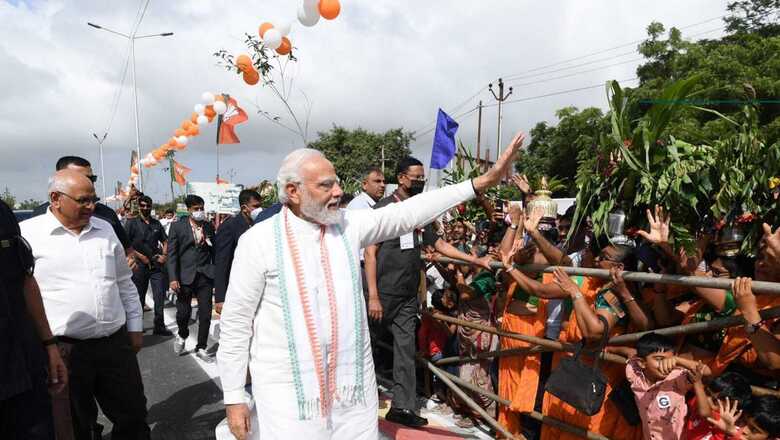
views
Prime Minister Narendra Modi recently inaugurated the Kutch Branch Canal in Gujarat that connects the last mile of Western Gujarat with the Narmada River waters, more than 750 km away in Central Gujarat. The challenges in completing the Narmada dam and its associated canal network, despite a concerted global campaign run by motivated NGOs, is an exemplary achievement in itself. However, the bigger story is the entire approach adopted by then Chief Minister Modi in solving the water problem of Gujarat, an approach which has now become a national template.
THE WATER PROBLEM OF GUJARAT
Among the five regions of Gujarat, three regions were particularly water deprived with as low as 2% of own water resources availability. Kutch, Saurashtra and Northern Gujarat regions were primarily arid or semi-arid regions. The result of this lack of water resources was that between 1950 and 2000, almost 26 years were declared drought years and most of the remaining years as partial drought. As per the India Meteorological Department’s record of 2015, between 1980 and 2001, Gujarat was hit by 12 major droughts. The groundwater level of all districts of Gujarat and Kutch was at an average 30 meters between 1975 and 1980. But it had gone down to 150-250 m by 2001-02. The groundwater level was going down at the rate of 3-5 m every year. If the situation was not immediately arrested, then Saurashtra region and especially Kachchh was staring at becoming a desert in about two decades, thereby forcing almost five million people to migrate. It would have been a human disaster of historic proportions.

That such a state has now become a model state for the country in managing water resources is a story that begins in 2001, when Modi assumed office as the Chief Minister.
With his experience as a social activist, Modi knew the traditional ways of doing things would not solve the centuries-old problem of Gujarat. What was needed was a scientific approach that utilised modern technology, astute planning and assured delivery with a multi-pronged approach.
SATELLITE-BASED PLANNING
The scientific bent of mind, with emphasis on use of technology, birthed the institute BISAG in 2003 – a specialist institute that used satellite remote-sensing technology and GIS-based maps to help propel the Gujarat infrastructure creation model. The technology, once perfected, was put to use to solve the water problem.
THE INSTITUTIONAL PROCESS – USE OF BISAG
The Gujarat state data for available water bodies, dams, ponds, rivers and canals was generated using high-resolution Indian Remote Sensing satellite data. Once the existing data was generated, a system was developed to visualise the data along with other relevant information such as road and rail network, administrative boundaries, slope, type of soil, land-use, geology, landform, forest details, sanctuary and national park, etc. Using the data, a GIS-based platform was developed where the data was visualised in the form of layers.
Using the functionalities of a GIS-based platform, the planning for the proposed water infrastructure was the next stage. If it was a pipeline, then the source and destination for the proposed pipeline was decided as per the need and alignment was proposed based on the available GIS datasets and the satellite imagery. The satellite imagery gave the understanding of the terrain. 3-D satellite image was also used to generate contours and visualise the terrain for better planning. The surface profile was generated to understand the elevations and depression areas coming across the route alignment.
By superimposing the other civilian use datasets, the data was further refined and useful information was derived such as administrative details, watershed and forest area details, type of land and survey number details of landholding, from where the route alignment was done. If required, alternate alignments were also proposed and the final alignment was suggested after field verification.
TIME-BOUND PLANNED EXECUTION
Check Dams
Check dams is a traditional method to recharge groundwater, especially in arid regions. Before Modi became the CM in 2002, Gujarat had just about 6,000 such check dams. Among the many reasons for non-expansion of this highly effective method of water conservation and utilisation was lack of assured knowledge of where to actually build the dams so as to be more effective, and local political pressures of prioritisation. The BISAG-based space technology came to help.
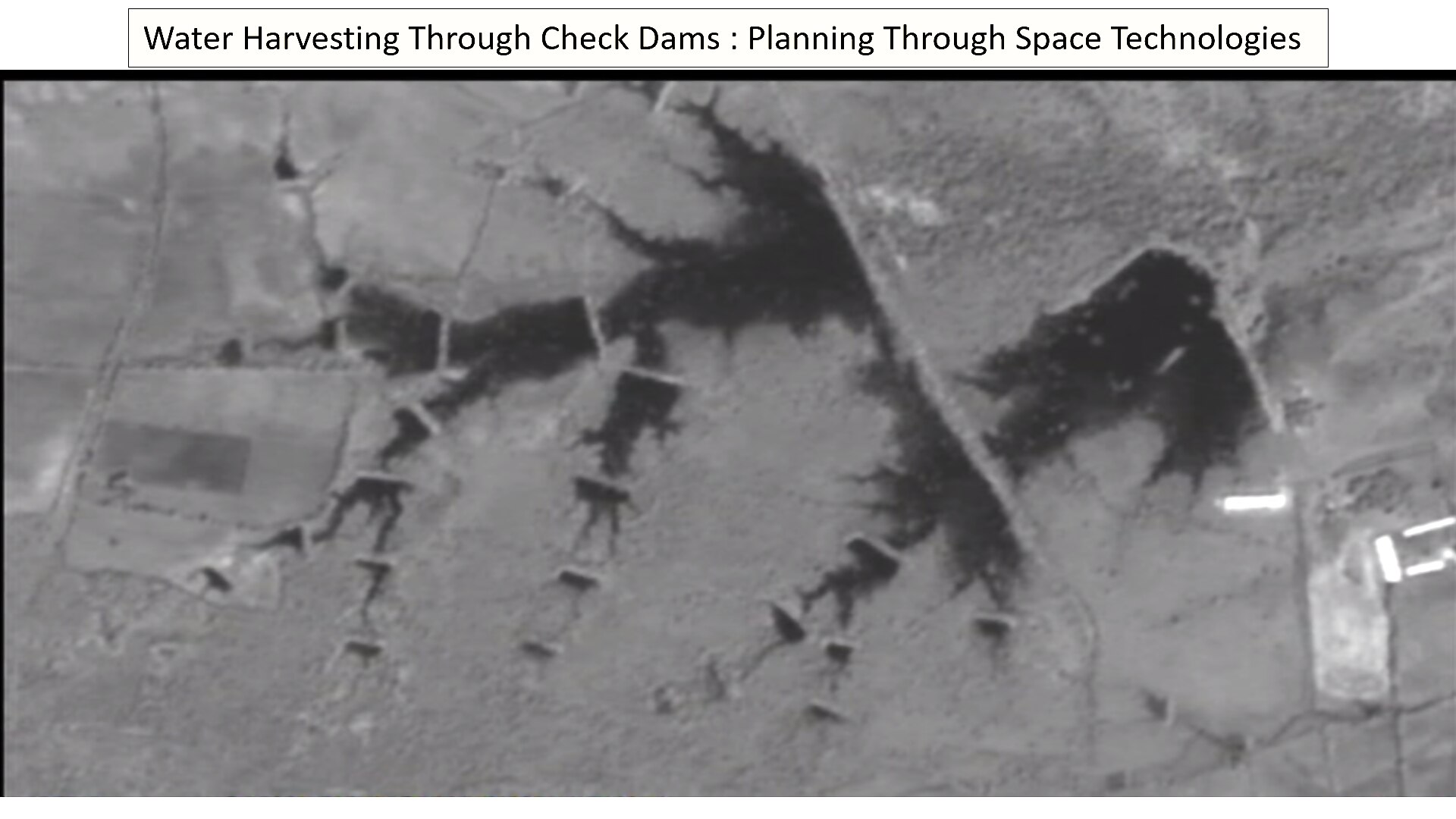
The entire planning was outsourced to BISAG, which, using the space technology as described above, proposed the best sites for the check dams and once the decisions were vetted and finalised, all other interventions were made infructuous.
The result — within just a few years, the total number of check dams increased from just under 6,000 to over a 100,000 and by mid-2016, these stood at 166,062 with a storage capacity of over 28,408 million cubic feet (mcf).
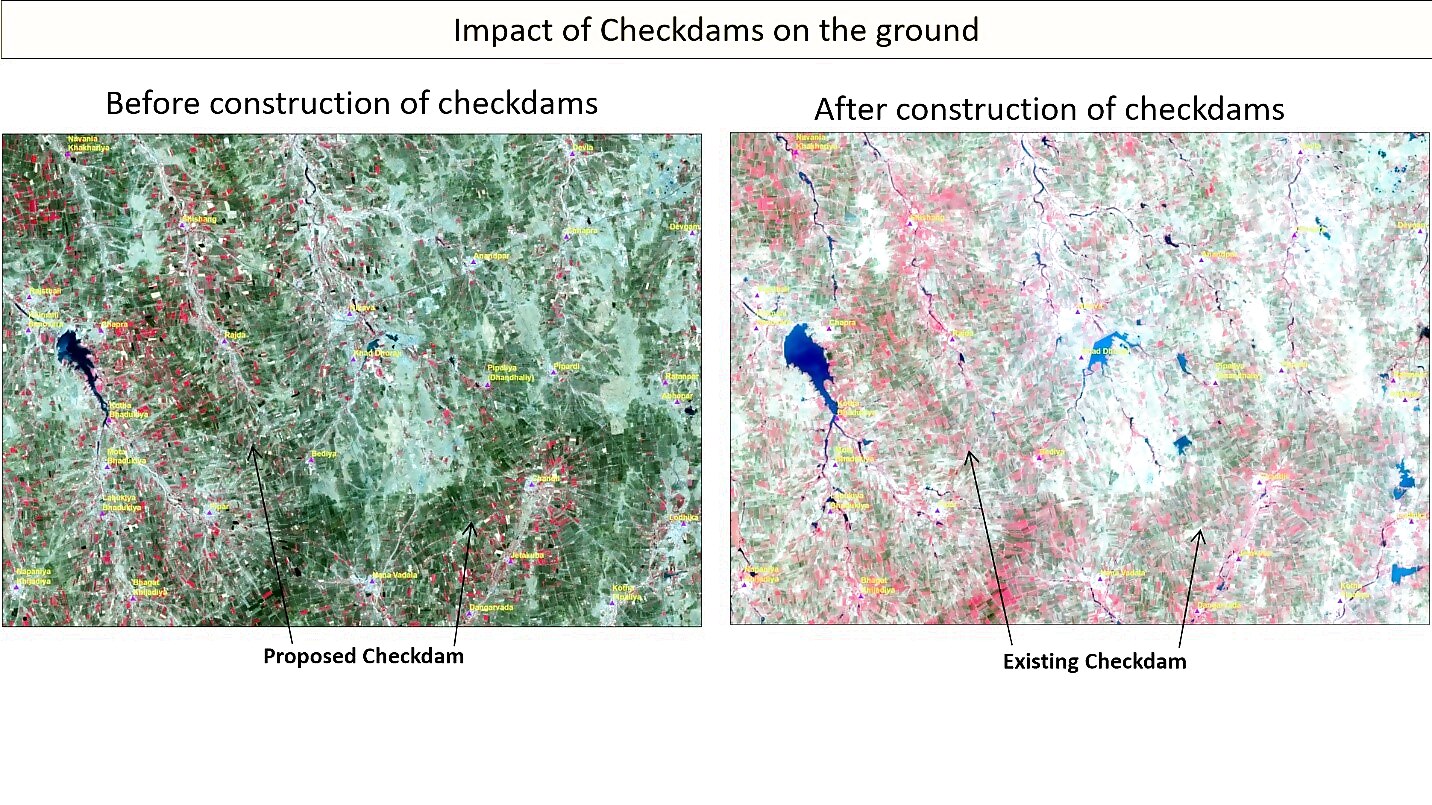
The water availability rose significantly post the construction of check dams.
Canal Network
If at the micro level, communities were mobilised for check dams, then at the macro level, three major projects changed the face of Gujarat, especially in the regions of Saurashtra, Kachchh and North Gujarat. These three projects are the Narmada Main Canal, the Sujalam Sufalam Yojana and the SAUNI Yojana. The implementation of these three major schemes also involved satellite-based planning and execution.
A) Narmada Main Canal
The main Narmada canal is the longest irrigation canal in the world, measuring 458 km in length, with a carrying capacity of 40,000 cusecs. But what has made the Narmada canal such a transformative project is the chain of branch canals, sub canals and distributaries – all in total measuring up to a length of humongous 71,748 km.
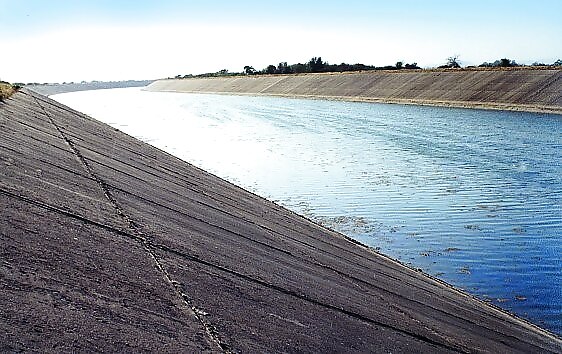
It is from this Narmada Main canal, that PM Modi inaugurated the Kachchh branch canal that helped reach the water to the remotest corners of Kachchh.
B) Sujalam Sufalam Yojana
This scheme was conceived to primarily irrigate the regions in North Gujarat, but also districts in other regions as well. It is a network of 332 km spreading canal, helping reach the floodwaters of Narmada and other rivers to the parched region of North Gujarat and provide irrigation solution to over 2.2 million hectares of cultivable land.
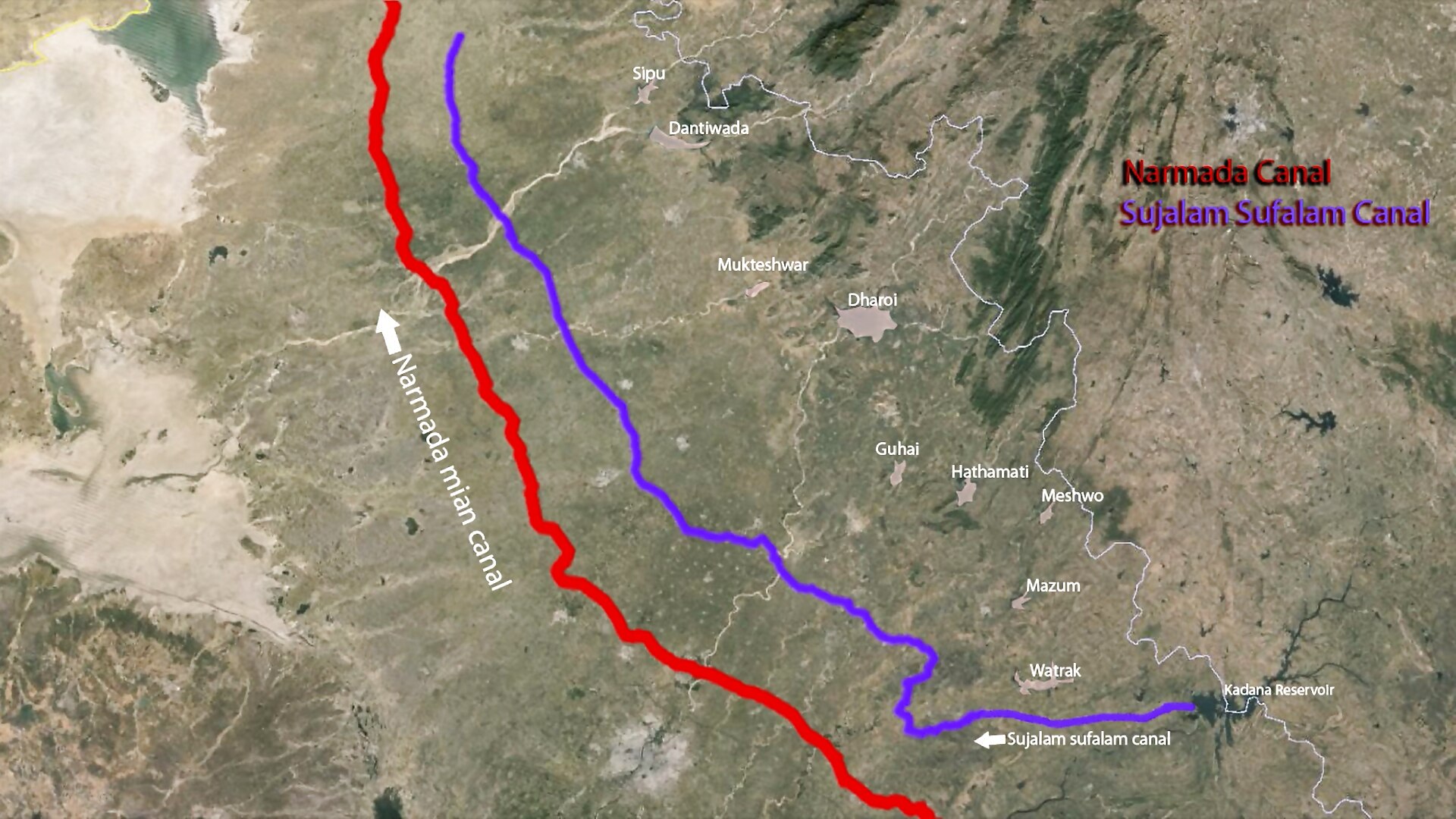
However, as is wont of the style of working of Modi, the optimum utilisation of Sujalam Sufalam canal was not just left to constructing a parallel canal to the main canal.
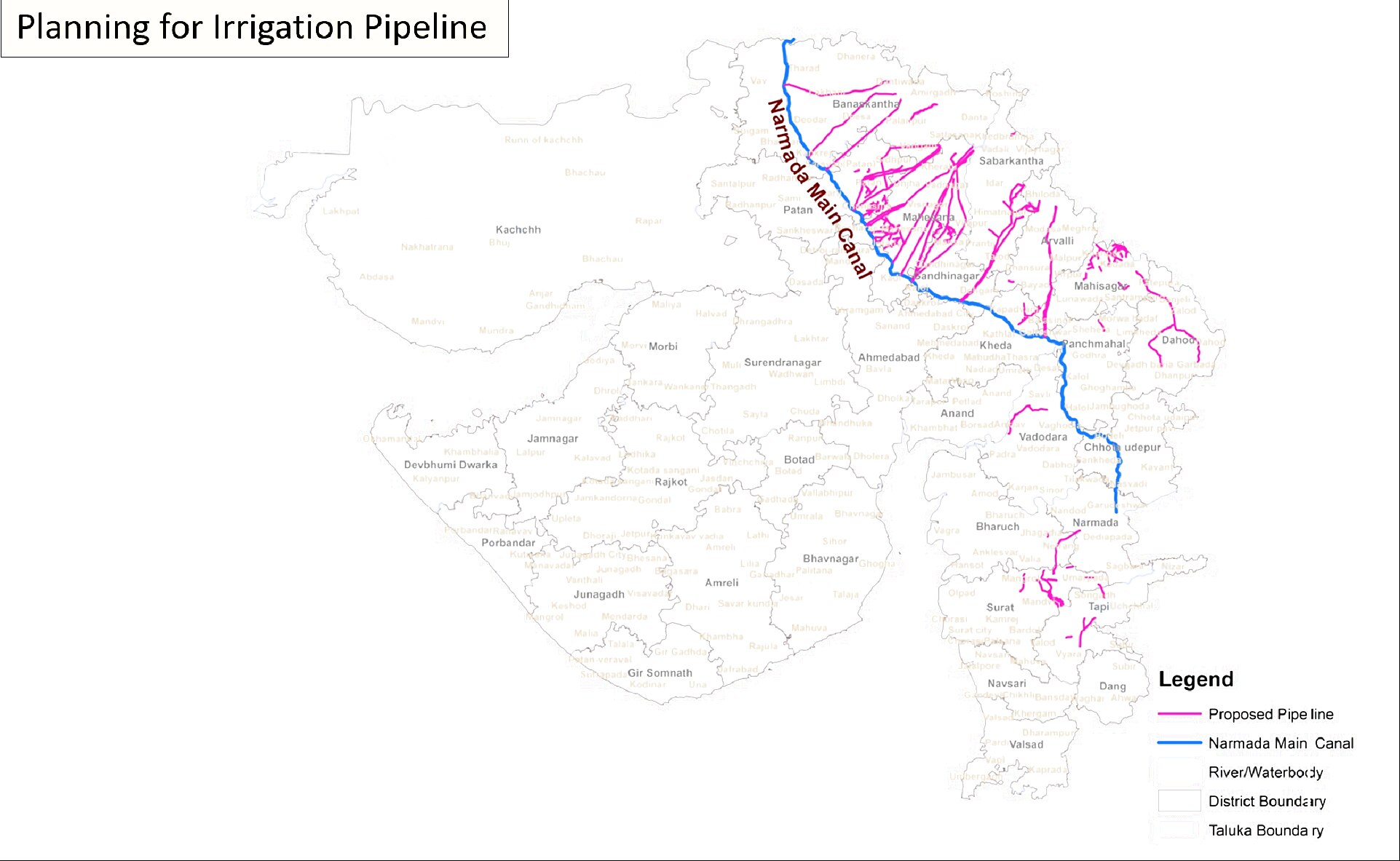
Instead, a chain of 14 lift irrigation pipelines were also planned using satellite technology.

These 14 life irrigation pipelines were planned to fill reservoirs, water tanks, wells, other water storage structures and supply waters to non-perennial lakes.
C) SAUNI Yojana
With Narmada Main canal giving water to Kachchh region, Sujalam Sufalam solving the water problem for North Gujarat, the only remaining region awaiting a solution was Saurashtra region. Thus, came in the SAUNI Yojana (Saurashtra Narmada Avtaran Irrigation Yojana) which literally means reincarnation of the Narmada River in the region.
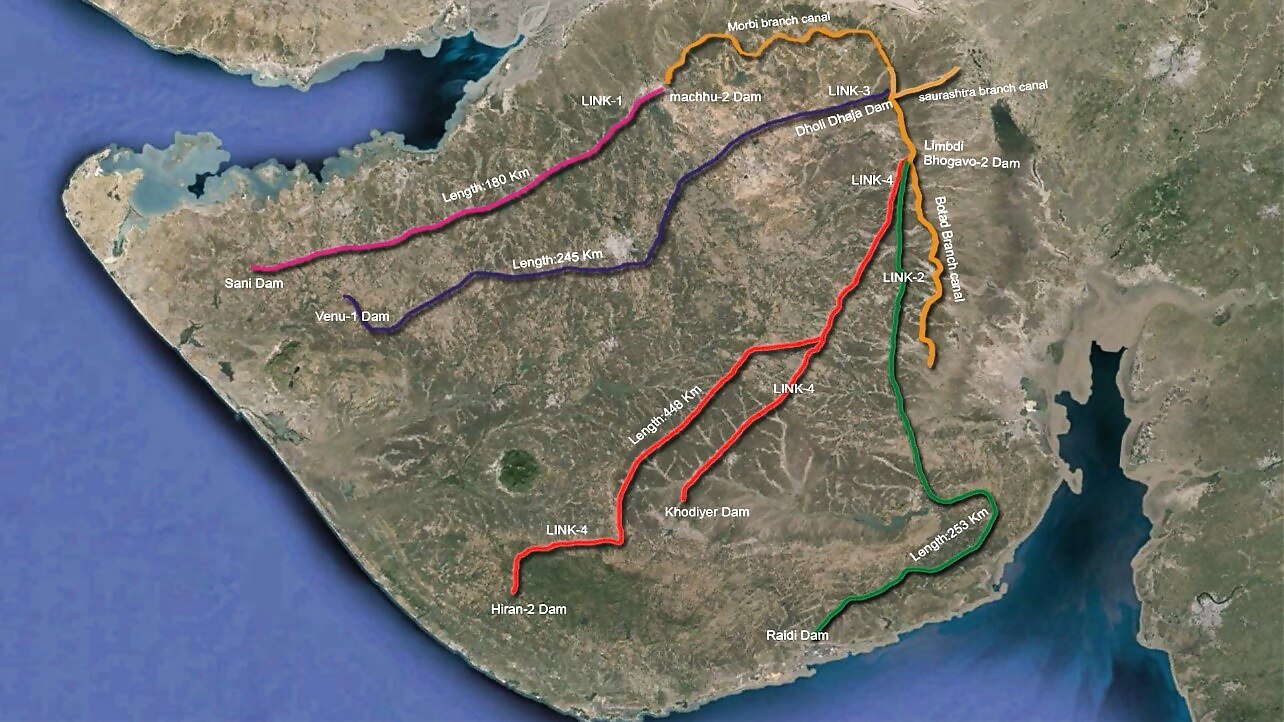
A 1,126-km network of four link pipelines was planned and constructed to distribute the excess Narmada waters to over 115 main reservoirs and irrigate over 1 million acres of land.
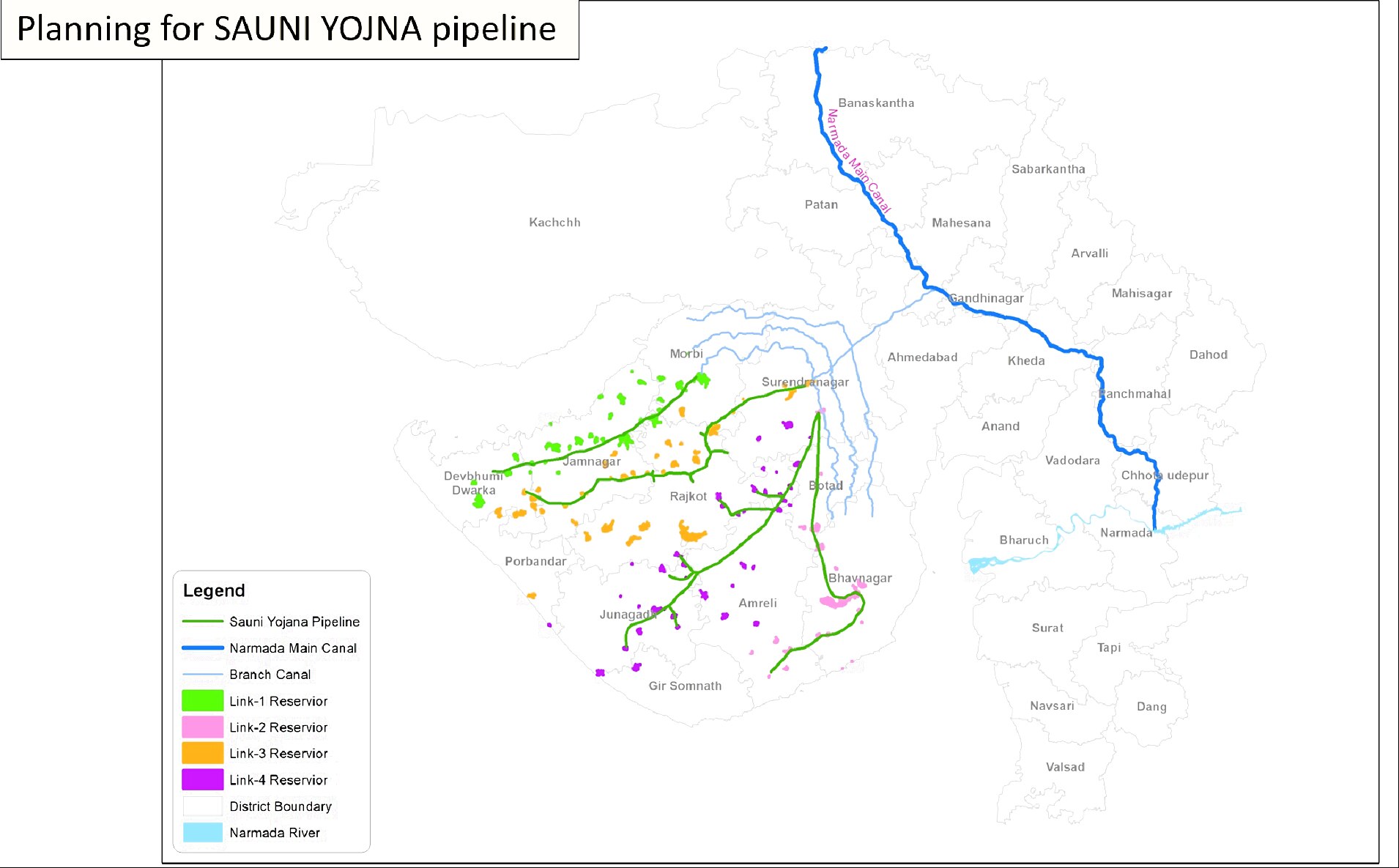
The entire pipeline, including the exact layout and route map, was again planned using satellite-based data so that the eater distribution could be most effective.
The Larger Impact
The model that was adopted to solve the water problem of Gujarat, in each and every region of the state, with verifiable success inspired Modi to adopt the same model in other infrastructure works. Satellite-based planning and collaborative approach became the hallmark, for example, in constructing the road infrastructure in Gujarat that is still ranked among the best nationally.
National Legacy
But what is the relevance of the water story for India of 2022? The genesis of what is now PM Gati Shakti, which is now the national master template, is in the water story of Gujarat. Use of satellite technology to map every square centimeter of land, with every public and private infrastructure mapped is the first stage. The planning of complex infrastructure projects follows this mapping. The delays associated with forest approvals, protected coastal zones, wildlife zones, approvals from different departments like railways, etc. are all sorted at the conception stage itself since the route planning can be so done to either minimise such approvals or fast-track such approvals online since all such domain ministries and departments are present on the same portal where the planning is being done.
PM Gati Shakti, with its ambitious goal of investing up to $1.3 trillion in the next few years in infrastructure, is the fulcrum on which India’s decade of growth is planned. The genesis of this planning lies in the hugely successful solution that Modi fashioned in Gujarat while solving its water problem.
That is the lasting legacy of the Sardar Sarovar Dam, which is the vision of India’s unifier and one of its tallest leader Sardar Patel.
That vision, like many others, is being fulfilled by Prime Minister Narendra Modi.
The writer is CEO of Bluekraft Foundation. The views expressed in this article are those of the author and do not represent the stand of this publication.
Read all the Latest Opinion News and Breaking News here















Comments
0 comment